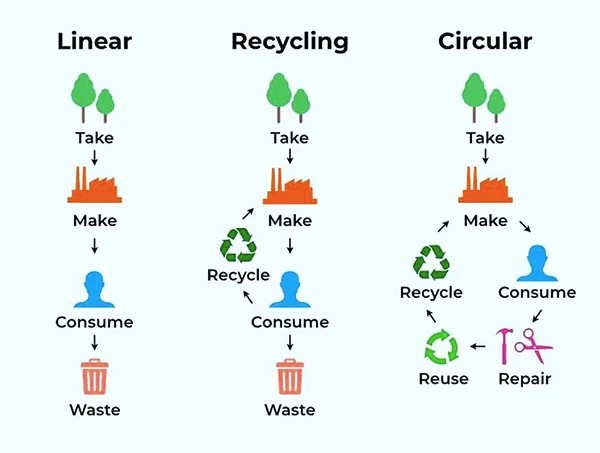The circular economy is a regenerative by design economic model that moves away from the traditional linear "make, use, dispose" consumption model. Instead of relying on the consumption of finite resources, the circular economy seeks to maximize the value of products, components and materials for as long as possible. This model is based on design and production principles that include reuse, repair, refurbishment and recycling of materials and products at the end of their life cycle.
Fundamental principles of the circular economy include:
Keep resources in use as long as possible: By designing products for durability, repairability and upgrades, you reduce the need for new resources and minimize waste.
Maximizing the value of recycled resources: When a product reaches the end of its life cycle, the materials from which it is made are recycled to create new products, thus reducing the need for extraction of raw materials.
Creating closed systems for materials: It encourages the cycling of materials within the same system or industry, reducing dependence on new raw materials and minimizing environmental impact.
Promoting energy efficiency: The focus is on efficient use of energy at all stages of a product's life cycle, from production to consumption and recycling.
The circular economy is considered sustainable for several reasons:
Reduce pressure on finite natural resources by maximizing the use of available resources and recycling materials.
Minimize environmental impact, reducing waste and greenhouse gas emissions by optimizing product life cycles.
It stimulates innovation in design and production, promoting the development of products and services that are sustainable and resource efficient.
It creates new business opportunities and jobs in sectors related to reuse, remanufacturing, recycling and other circular economy services.
Implementing the circular economy requires significant changes in the way societies produce and consume goods. This includes adapting legislation, stimulating technological innovation, encouraging sustainable consumption behaviors and developing infrastructures for waste collection and processing. However, the potential benefits for the environment, economy and society make the circular economy a valuable and necessary goal for a sustainable future.








